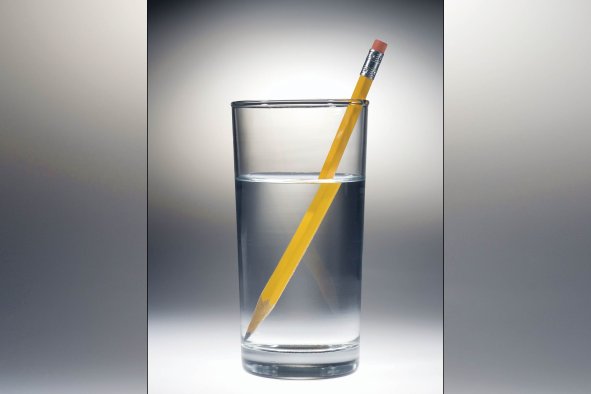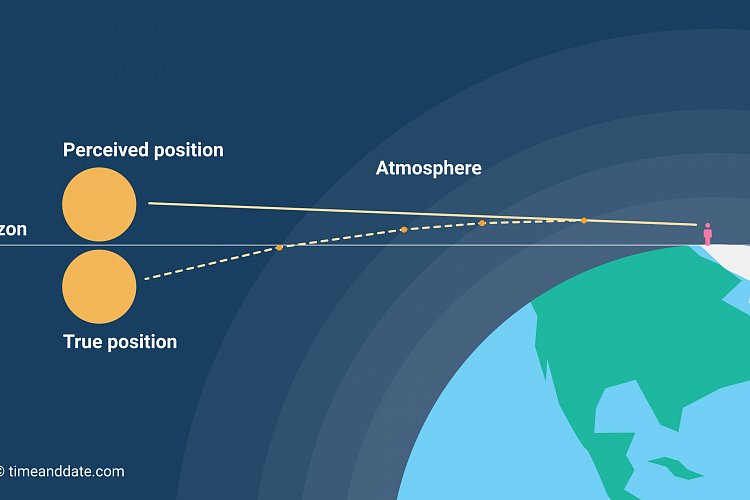In this article, we are going to discuss different types of refraction along with examples on each.
Based on the density of the medium we see various types of refractive phenomena of light. Types of refraction are listed below:-
Diffuse Refraction
When a light ray diffuses in all directions while traveling from one medium to another then it is called diffuse refraction. This effect is seen when the light ray is passed out from the concave surface and or propagates in different wavelengths and refracts at different angles.

A common example of diffusion refraction is the diffusion of light from a light bulb. The rays of the light pass in all directions, hence are used as luminance.
Specular Refraction
When a ray of light travels from one medium to another, it undergoes refraction, and a light ray bends, diverting towards or away from the normal ray, based on the refractive index of the medium.
If a light ray travels from a denser to a rarer medium, the ray of light will bend away from the normal.

The incident ray ‘i’ traveling from a medium having refractive index n1 enters into the medium of refractive index n2 and refracts away from the normal ray as n1> n2.
If a ray of light travels from a lighter to a denser medium, the ray of light will bend towards the normal.

The incident ray ‘i’ traveling from a medium of refractive index n1 traverse through the medium of refractive index n2 and bends towards the normal ‘N’, if n1< n2.
Consider a pencil inserted in a glass of water such that a part of a pencil lies immersed in the water and part of t in the air.

Image Credit: Newsweek
You will notice that a pencil appears to be slightly bent in the water. This is due to the fact that the density of water is more than the air; hence the incident rays traveling from air to the water will show some deviation from the normal ray forming an angle of refraction towards the normal.
Read more on Specular and Diffuse Reflection: Important FAQs, Concepts, Examples.
Glossy Refraction
A light ray showing both types of refraction that is diffusion as well as the specular refraction, then the surface will appear glossy. This type of refraction is called glossy refraction.
You can see glossy refraction in crystals like quartz, smoky quartz, tourmaline, amethyst, rose quartz, citrine, ruby, carnelian, etc. The light enters the crystal and is diffracted from all the faces of the crystal and is refracted specularly from one face of a crystal as shown in the below figure.

The diffusion of a light entering from the surface of the diamond gives a glossy appearance to it and the surface appears shiny.
The wavelength of the refracted light is varied from the incident light depending upon the absorption property of the material. It is clearly indicated in the above diagram that all the wavelengths of the light are absorbed in the diamonds and a wavelength in the range of 380-420nm is given out hence the crystal appears purple in color.
Some other examples of glossy refractions are water balloons, marbles, glass, LEDs, etc.
Read more on Can Light Bend Around Corners? Important FAQs.
Acoustic Refraction
The speed of a sound depends upon the density of the medium through which it travels. The speed of sound in air is 330m/s and that of water is 1480m/s.
If you have noticed the difference while you speak standing near the water bodies and normally on the ground, you can hear the person standing on the other side of a river far apart but the same is not the case when two people try to speak standing on the ground at the same distance away from each other.
Negative Refraction
When light is traveling from the medium having a negative refractive index, a ray of light is bent making an angle negative to a normal of the surface.

Consider a ray of light from a point source incident on the surface of glass slab and then converges at focus f1 and then again diverges from f1 and incident on another surface of the glass from where the rays again bend and meets normal making a negative angle.
Read more on Spherical Mirror | All Important concepts and 10+ FAQs.
Seismic Refraction
The Earth always goes under various plate tectonic activities. As the plates are floating over the asthenosphere, plates might converge or diverge depending upon the forces acting on the plate that causes its movement. The convergent or divergence of the plate arrives with different volcanic activities that cause the formation of seismic waves.
Image Credit: Quora
Seismic waves are categorized as primary and secondary waves. As the density of the Earth varies layer by layer, the s-waves and p-waves traveling through the Earth undergo refraction. S-wave can travel only from the solid medium whereas the p-wave which is a longitudinal wave can travel from both, solid and liquid.
Atmospheric Refraction
At a higher atmosphere, the pressure is low and hence the ray of light entering into the Earth’s atmosphere travels a longer distance. Therefore we see a shift of the objects from their actual position. Also, there is variation in the atmosphere due to temperature and pressure conditions, and air density varies. As ray travels from two different density layers, the ray of light undergoes refraction.
The atmospheric refraction is seen at night during the twinkling of the star. The position of the star appearing in the sky is not the same as they appear. The shift in the position occurs because the light ray from the star entering the Earth’s atmosphere bent due to the density difference.

Image Credit: timeanddate
The same is the case at the time of sunrise and sunset. When the sunrays hit the Earth’s atmosphere, the rays of light bend and enter through the Earth’s atmosphere, and for viewers, it appears that the Sun has already resin but in fact, the Sun is still at the horizon.
During sunset, even after the sunset, the Sun appears above the horizon due to the refraction of light receiving to the viewers.
Frequently Asked Questions
What is Snell’s Law?
The ray of light traveling from two different mediums goes under refraction.
“The ratio of the refractive angle to the incident angle is directly proportional to the refractive index of the medium from which the ray of light travels.”
Does the speed of light change on refraction?
When the light travels from one medium to another, it shows refraction.
Due to refraction, the direction of the light ray changes as it travels at different angles; hence the speed of light decreases on traveling from rarer to denser medium and further.
Why light rays do not reach the abyssal zone due to refraction?
The abyssal zone is 1500m below the surface of the ocean.
Due to the greater volume of the water, the pressure in this zone is high. The light entering from above the surface of the water diffuses and could not reach further deeper as the speed of the light reduces.
Also Read:
- Microscope refraction index problems
- Uses of refraction
- Properties of refraction
- What is refraction and why does it occur
- Refraction at spherical surfaces problems
- Where does refraction occur
- Refraction vs reflection
Hi, I’m Akshita Mapari. I have done M.Sc. in Physics. I have worked on projects like Numerical modeling of winds and waves during cyclone, Physics of toys and mechanized thrill machines in amusement park based on Classical Mechanics. I have pursued a course on Arduino and have accomplished some mini projects on Arduino UNO. I always like to explore new zones in the field of science. I personally believe that learning is more enthusiastic when learnt with creativity. Apart from this, I like to read, travel, strumming on guitar, identifying rocks and strata, photography and playing chess.